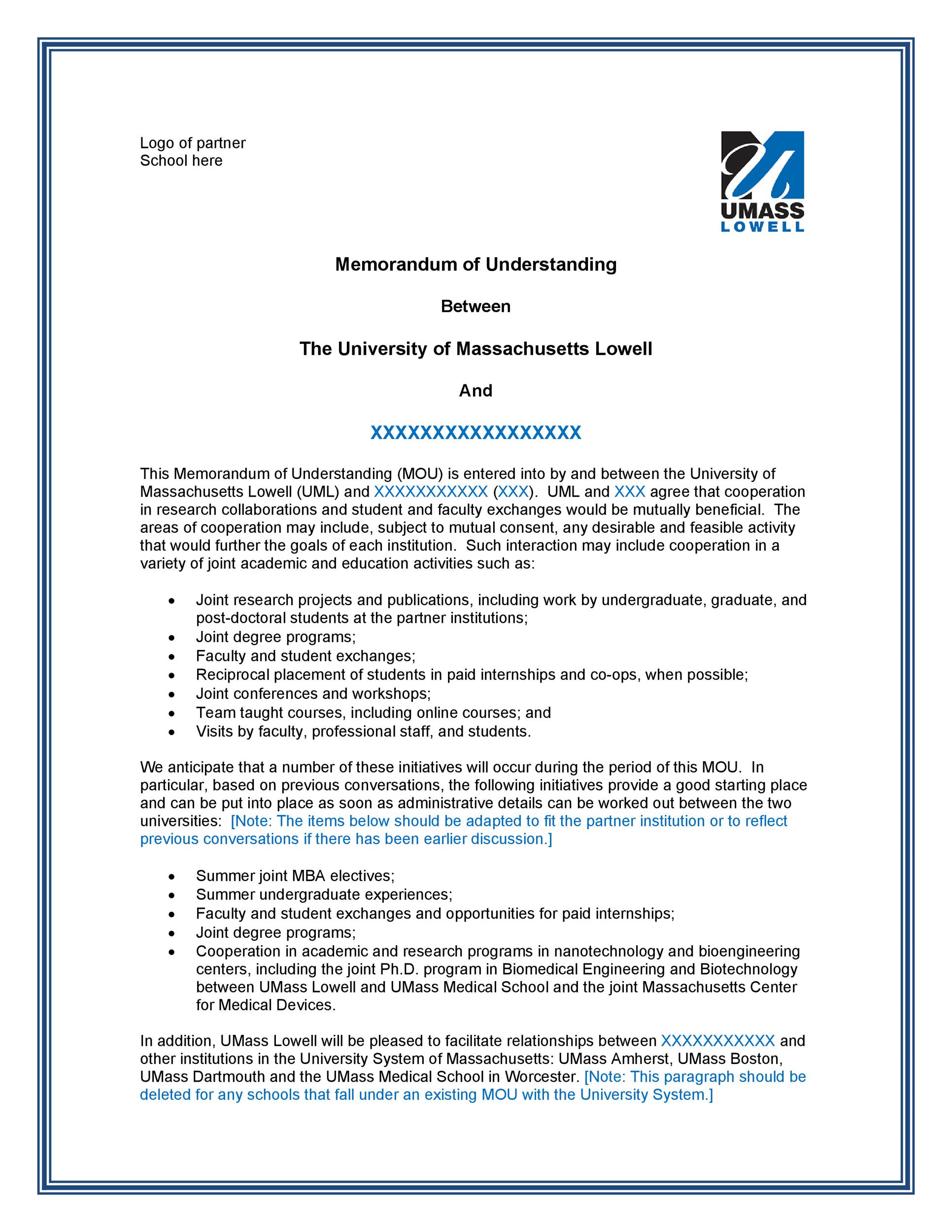
Memorandum
Seven memorandums have been submitted, pointing out the poor quality of potable water, the need for medical facilities and tests every week.: There were the pencilled marks and memorandums on the wainscot by the window.: We're taught how to write case briefs, memorandums, appellate briefs, and case citations. The Luftwaffe staff drew special attention to this collateral benefit in several of.
A memorandum (abbrev.: memo; from Latinmemorandum est, 'It must be remembered') is a writtenmessage that may be used in a business office. The plural form of the Latin noun memorandum so derived is properly memoranda, but if the word is deemed to have become a word of the English language, the plural memorandums, abbreviated to memos, may be used. (See also Agenda, Corrigenda, Addenda).
In law, a memorandum is a record of the terms of a transaction or contract, such as a policy memo, memorandum of understanding, memorandum of agreement, or memorandum of association. Other memorandum formats include briefing notes, reports, letters, or binders. They may be considered grey literature. In business, a memo is typically used by firms for internal communication, while letters are typically for external communication. Memorandum formatting may vary by office or institution. If the intended recipient is a cabinet minister or a senior executive, the format might be rigidly defined and limited to one or two pages. If the recipient is a colleague, the formatting requirements are more flexible.[1]

Policy briefing note[edit]
A specific type of memorandum is the policy briefing note (alternatively referred to in various jurisdictions and governing traditions as policy issues paper, policy memoranda, or cabinet submission amongst other terms), a document for transmitting policy analysis into the political decision making sphere. Typically, a briefing note may be denoted as either “for information” or “for decision”.
Origins of term[edit]
The origins of the term “briefing” lie in legal “briefs” and the derivative “military briefings”.[2]
Purpose[edit]
The primary purpose of a memo “for decision” is to support decision making – and also to “help (or sometimes influence) a decision-maker to make a better decision in a particular problem situation than he might otherwise have made without the analysis”.[3] Other purposes that the briefing note can serve include: conveying information; informing decisions, making a request, providing a response to a question, making a suggestion, presenting an informal report, proposing a solution to a problem, or documenting a reference for future use.
Structure[edit]
As the communication mechanism of the policy analysis process, the briefing note should provide a coherent synopsis of a policy problem, identify different policy options for addressing the problem, articulate opposing perspectives and advocate a recommended option. The typical structure for a briefing note includes a description of the proposed policy; relevant background information; a discussion of key considerations (including implementation concerns, financial considerations, stakeholder impacts, and possible unanticipated consequences), a summary of arguments for and against the policy and a recommended decision. Policy documents that start with a proposal and assemble an argument for that position are more accurately referred to as a government white paper. A government green paper which raises a policy option and is meant to open a dialogue on the proposal is more similar in tone to a briefing note than is a white paper.
Quality criteria[edit]
There is no universal standard for a briefing note, but it is generally understood to be a concise, coherent summary of a public policy problem with a clearly articulated logic for following a recommended course of action. ”Next to a political nose, and a logical brain, the most important skill of the good treasury [person] resides in [their] fine drafting hand. The concise, coherent and penetrating note is the final expression of all other talents.”[4] In many governance settings based on the Westminster system, policy analysts are expected to analyze the issue and write the briefing note from a neutral civil service perspective. However, the briefing note “for decision” must contain a recommendation, acknowledging that “to say anything of importance in public policy requires value judgments, which must be explained and justified”.[5]
See also[edit]
References[edit]
- ^Gary Blake and Robert W. Bly, The Elements of Technical Writing, pg. 113. New York: Publishers, 1993. ISBN0020130856
- ^Simpson, J.A. and E.S.C. Weiner (ed.) 1989. Oxford English Dictionary. 2nd ed. OED Online. Oxford: Oxford University Press
- ^Quade, E.S. 1975. Analysis for public decisions. New York: Elsevier. p. 13
- ^Heclo, H. and Rahul Vaidya 1974. The Private Government of Public Money. Berkeley: University of California Press, p. 58
- ^Majone, G. 1989. Evidence, Argument, and Persuasion in the Policy Process. New Haven, CT: Yale University Press. p. 21
External links[edit]
| Look up memorandum in Wiktionary, the free dictionary. |
- RPI.edu, The Writing Center: Rensselaer Polytechnic Institute.[dead link]
- Washington.edu, Memorandum Writing, Patrick, Richard F. Elmore, Laurie Werner.
- How to Write Briefing Notes, Parkinson, Robert B.
- Classic Format of a Briefing Note, Parkinson, Robert B.
-6.jpg)
